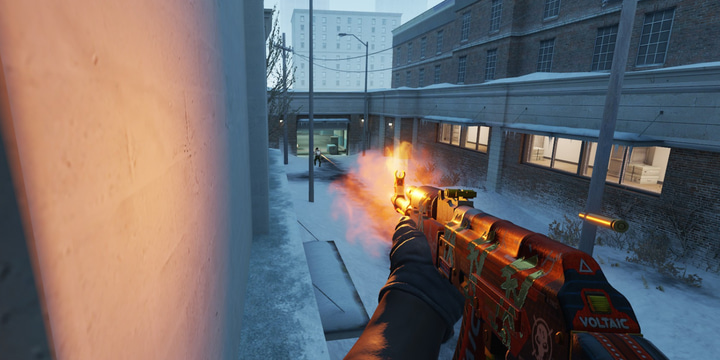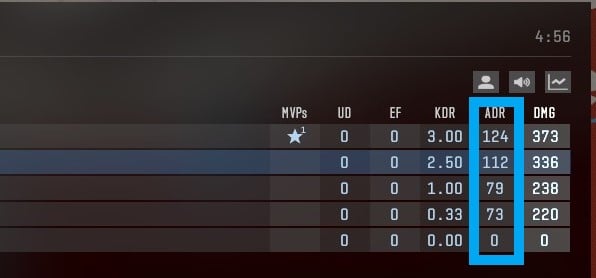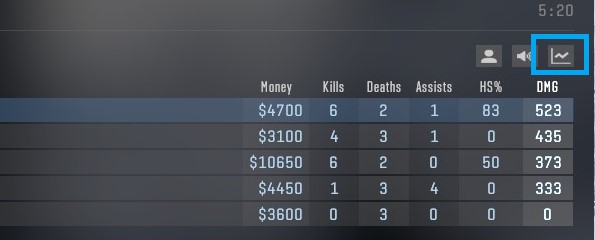What is ADR in CS2?

- ADR stands for Average Damage Per Round
- It is an extra way of measuring player performance, since it doesn’t take kills and assists into account
- Like any stat, ADR has its limitations, so don’t only rely on ADR to judge a player’s performance
If you have played any iteration of Counter-Strike then you are aware of how competitive the game can be, and in order to climb higher on the competitive ladder, players are required to master all of the game’s aspects including weapon accuracy, movement, map layout, etc.
It goes without saying that the more you practice, the better you will perform. However, when it comes to accurately measuring one’s performance, things can get a little tricky. This is where the ADR comes in handy, so let’s take a look at it.
What is ADR in CS2?
ADR is an acronym that stands for Average Damage per Round and it quite simply displays the amount of damage that a single player has dealt (on average) during a Counter-Strike round. You can calculate your ADR based on one single match, or you can calculate your ADR based on all of your matches. This stat is commonly used to measure the performance of players due to it being more accurate than alternative stats: if you’ve done 35 damage to 4 enemy players in a single round you’ve done way more to help out your team than your teammate who gets 1 kill by finishing off an enemy who was at 10HP, but it won’t show up on the scoreboard.

ADR can be a valuable way of showing contributions to a team, but it should be noted that ADR is (like all stats) not the be-all and end-all stat. Players who smoke off enemy positions or throw that one molotov that stops an important enemy push without doing any damage can have tremendous value for a team without it showing up in their ADR, so when evaluating player performance it’s always a good idea to check other stats as well, as ADR does not tell the whole story.
What is a Good ADR in CS2?
If you want to learn what constitutes a good ADR in CS2 it’s important to know that it takes 100 damage to kill an enemy. The vast majority of players won’t get a kill every round (so an ADR of 100 is not the baseline) but players are expected to at least contribute damage numbers. Important to note is that a full kill is always 100 damage, so even if you headshot someone with an AWP it’ll only add 100 to your ADR.
In most cases, having an ADR rating between 70 and 80 is what is considered to be good/normal, and everything over that is considered to be above average, with players who are putting up numbers above 95 putting in a superstar performance. An ADR between 60-70 means that you’ve played a rather quiet game, and anything below 60 means that you played well below par.
This all needs to be viewed in context, of course. An AWPer needs to hit just one shot to get 100 ADR (unless he legs an opponent) so designated snipers are more likely to put up big numbers than players who are often throwing smokes and supporting the team with flashes. Again: it’s important to view stats in the right context.
How To Calculate ADR in CS2
Calculating ADR is a very simple process. You simply divide the damage you’ve done (to enemies’ health bars, so not damage in total – an AWP headshot on an enemy that’s full health only counts as 100 damage, not 400+) by the amount of rounds you’ve played. CS2 does this automatically for you, and you can access this stat by opening the scoreboard (by using the tab button) and then right clicking with your mouse and navigating to ‘cycle stats’ (marked in blue below) in the menu with your mouse. This will bring up a whole different set of scoreboard statistics.

Note that the ‘DMG’ (damage) stat that’s shown on the CS2 scoreboard by default is not the same as ADR. The damage stat is simply all the damage you’ve dealt to enemies combined, it’s not an average.
ADR vs KDR
In Counter-Strike 2 and many other popular first-person shooter games, the most prominent stats that can be measured are the player’s kills and deaths. The result of these two stats intersecting is known as the Kill/Death Ratio, or KDR for short. The KDR is a stat that is commonly used to measure a player’s performance and is calculated by dividing the player’s kill count by the player’s death count.
However, using KDR to evaluate a player’s performance is not always accurate or fair. In some cases, the player may just be lucky enough to deal the kill shots to the enemy team while their teammates are doing most of the overall damage, so more often than not ADR is used as a more accurate measure of player performance when it comes to actually damaging the enemy team.
Conclusion
ADR is another stat that you can use to quantify your (or someone else’s performance) but as we mentioned before: it shouldn’t be the only stat that you use. ADR is usually a more honest and fair way of looking at a player’s contributions than KDR though, since the latter only takes kills into account and not damage that doesn’t result in a kill or assist.



But what is considerd “good”ADR in wingman? Cuz wingman has less players so less dammage can be done.